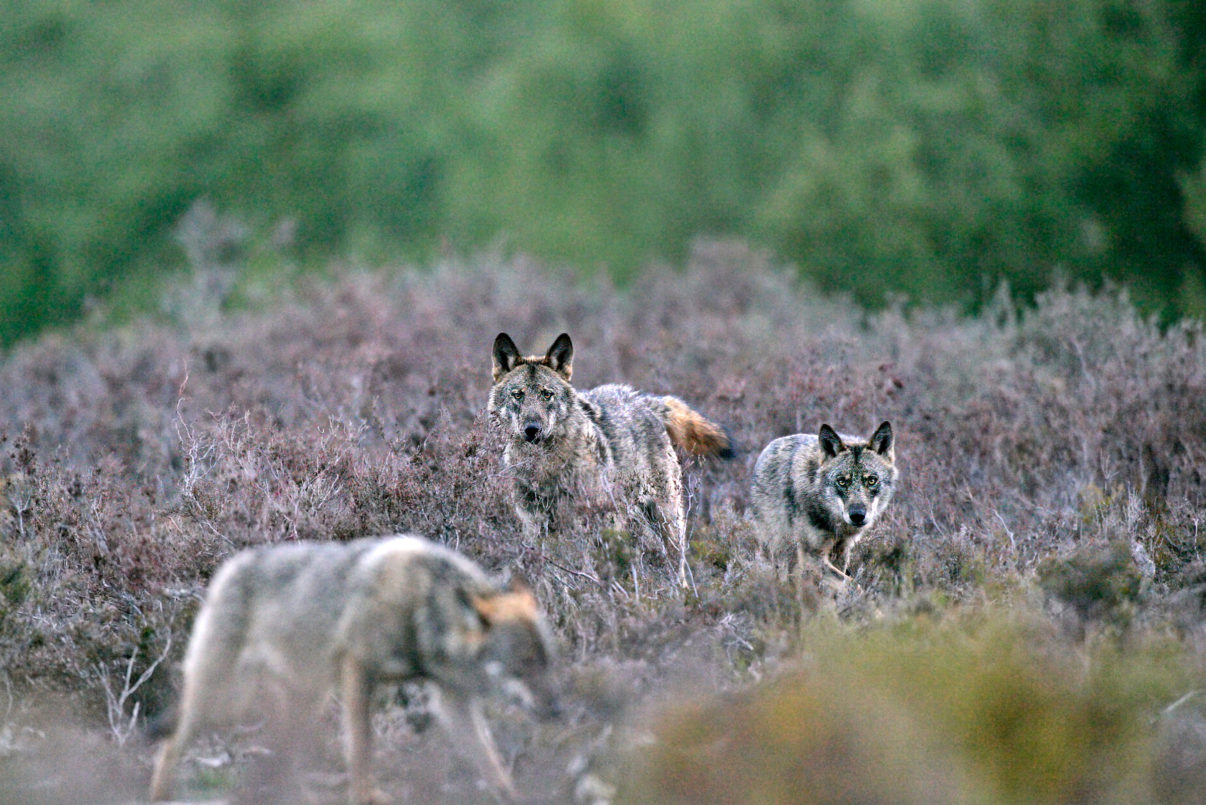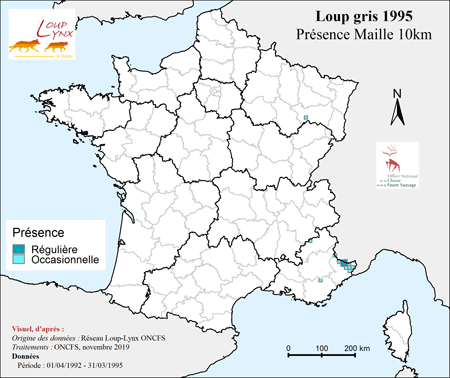
+- WildFact (https://wildfact.com/forum)
+-- Forum: Information Section (https://wildfact.com/forum/forum-information-section)
+--- Forum: Terrestrial Wild Animals (https://wildfact.com/forum/forum-terrestrial-wild-animals)
+---- Forum: Carnivorous and Omnivores Animals, Excluding Felids (https://wildfact.com/forum/forum-carnivorous-and-omnivores-animals-excluding-felids)
+----- Forum: Canids (Canidae) & Hyaenids (Hyaenidae) (https://wildfact.com/forum/forum-canids-canidae-hyaenids-hyaenidae)
+----- Thread: European Wolves (/topic-european-wolves)
RE: European Wolves - Spalea - 06-20-2020
Niko Pekonen: " Grey wolf (canis lupus) middle of cotton flowers on a misty morning. Finland "
RE: European Wolves - Sully - 07-09-2020
Pack size in humanized landscapes: the Iberian wolf population
[b]Abstract
Group living is an important behavioral feature in some species of mammals, although somewhat uncommon in the Order Carnivora. Wolves Canis lupus are highly social and cooperative carnivores that live in family groups, i.e. packs. The number of wolves in a pack affects social, reproductive and predatory behavior, thus conditioning population dynamics. Despite its relevance to management decisions, pack size has not been thoroughly studied in populations inhabiting human dominated landscapes such as the Iberian Peninsula. We estimated variation of wolf pack size from 1990 to 2018 in northern Spain, both in winter and summer. Winter data corresponded to direct observations and snow tracking at 42 localities (n = 253 data, 160 pack-years), whereas summer data corresponded to observations at rendezvous sites at 22 localities (n = 237 data, 43 pack-years). We estimated average pack size from the largest number of wolves recorded at each locality and year. Winter pack size averaged 4.2 ± 1.7 (mean ± SD) individuals. At summer rendezvous sites adult/subadult wolves (older than one year) averaged 3.1 ± 1.3 individuals, whereas pups averaged 4.0 ± 1.9. Generalized linear mixed models (GLMM) showed that pack size declined through the winter from 4.9 (4.2–5.6, 95% CI) wolves in November to 3.8 (2.9–4.9, 95% CI) wolves in April. We found no trend in pack size, neither in winter nor in summer. We discuss our results compared with other studies and populations worldwide, and its usefulness to comprehend the dynamics of this vulnerable population.
[/b]
RE: European Wolves - TheNormalGuy - 07-09-2020

*This image is copyright of its original author
Présence régulière = Oftently sighted/established populations of wolves
Présence Occasionnelle = Occasional sightings/presence
1992 : First Wolf Pair sighted in France in the Alp-Maritimes Province
Présence Occasionnelle = Occasional sightings/presence
1992 : First Wolf Pair sighted in France in the Alp-Maritimes Province
RE: European Wolves - TheNormalGuy - 07-09-2020
EU Reporter Correspondent | June 19, 2020
European citizens support protection for wolves, and the majority oppose the killing of wolves in any circumstances. This is the main outcome of an opinion poll among adults across six EU countries commissioned by Eurogroup for Animals. It’s time for politicians to listen to the voice of their electors and ensure that the species continues to be strictly protected.
Conducted bySavanta ComRes in six EU member states – France, Germany, Italy, Spain, Poland and Finland the survey aimed to better understand public perceptions and attitudes towards wolf protection across Europe.
The 6,137 EU citizens who responded showed overall a high level of support for wolf protection, particularly in Poland, Spain and Italy, and a great level of awareness of the benefits of wolves to their local ecosystem. The majority of adults say that the killing of wolves is rarely or never acceptable in any tested circumstances, even when they have attacked farm animals (55%), or to control their population size (55%).
While the hunters’ community and some member states have been calling for more flexibility in managing their wolf populations, the surveyed EU’s citizens disagree. Instead, 86% of respondents across the six surveyed countries agree that national governments and the EU should fund and equip farmers with the tools to protect farm animals from wolf attacks. 93% of adults agree that wolves have a right to exist in the wild. Similarly, 89% agree that wolves belong to our natural environment just like foxes, deer or hares, and 86% agree that wolves should be accepted to live in their respective countries.
At least three quarters of interviewed adults agree that farmers and people living in rural areas should coexist with wolves and other wild animals without harming them (78%). While 38% think that wolves pose a risk to people, only 39% say they would know how to behave if they were to encounter a wolf – so it’s clear that more needs to be done to educate today’s citizens about how to live alongside wolves again.
“This research unequivocally demonstrates that European citizens strongly support protection for wolves, and oppose their killing in any circumstances,” says Reineke Hameleers, CEO of Eurogroup for Animals.
“We hope EU institutions and member states’ politicians will now work together to ensure that current protection levels are maintained while national and EU funding are made available to develop and provide farmers with innovative tools to protect farm animals from wolf attack and increase tolerance and social acceptability. In fact, the recently published EU Biodiversity Strategy to 2030 calls on member states to commit to not deteriorate the conservation of protected species, like the wolf.”
The EU Biodiversity Strategy to 2030, drafted as part of the EU Green Deal, also requests member states to ensure that at least 30% of species and habitats not currently in favourable status are in that category or show a strong positive trend. Given the high public support for the conservation of wolves, Eurogroup for Animals encourages countries where the species is increasingly persecuted, like Finland, France and Germany, to listen to the opinion of their citizens and prioritise efforts to protect the species and prevent conflict with large carnivores like wolves and bears, as well increasing awareness on how to coexist with them peacefully and without risk.
Finally, we hope that the upcoming publication of the updated European Commission’s Guidance document on the strict protection of animal species of Community interest will provide more clarity to those Member States on the EU Habitats Directive to lethally manage populations of wolves and other protected species.
RE: European Wolves - Sully - 07-09-2020
Living with wolves: new Rewilding Portugal study gives cause for optimism
In a recent study conducted by Rewilding Portugal and partners within the LIFE WolFlux project, nearly half of interviewees were open to the idea of living alongside the Iberian wolf under certain conditions. Feedback from the study will help the team in their rewilding efforts.

*This image is copyright of its original author
The Portuguese subpopulation of Iberian wolf south of the Douro river is currently fragmented and highly isolated from the rest of the Iberian population.ANDONI CANELA
RE: European Wolves - Spalea - 08-04-2020
Niko Pekonen: " Grey wolf (canis lupus) in a forest. Finland "
RE: European Wolves - Sully - 11-27-2020
Wolves in Germany (pack/pair/individual)

*This image is copyright of its original author
RE: European Wolves - Sully - 12-03-2020
The recent history of wolves in Italy (@adriawildlife)

*This image is copyright of its original author
RE: European Wolves - Sully - 12-03-2020
New study from December 1st in its entirety
Interactions between livestock guarding dogs and wolves in the southern French Alps
[b]Abstract
Thirty years after the return of grey wolves (Canis lupus) to the French Alps, the number of livestock losses is on the rise despite livestock guarding dogs (LGDs) being widely used. Their relevance is, therefore, questioned by some sheep owner associations. To date, no study has investigated how LGDs interact with wolves in pastures. We present the results of a 6-year study totalling 3,300 hours of direct night-time observations to record the nature, frequency and outcomes of LGD-wolf interactions in the southern French Alps. We recorded 476 wolf events in the presence of LGDs, including 175 interactions, 66% of which were agonistic. Most (65%) of the interactions occurred at a distance > 100 m from the flock and on average involved more LGDs than wolves. In the presence of LGDs, wolves approached the flocks 134 times resulting in no attack (65%), attacks with no sheep victim (24.6%), or attacks with ≥ 1 sheep victim (10.4%). Our results suggest that LGD-wolf interactions are complex and do not simply occur in the immediate vicinity of the flock. We recommend using groups > 6 LGDs and reinforcing the presence of LGDs in a wider radius around the flock to limit the presence of isolated groups of sheep and to improve protection against wolf attacks.
[/b]
Few interesting figures:

*This image is copyright of its original author

*This image is copyright of its original author

*This image is copyright of its original author
RE: European Wolves - Sully - 01-03-2021
The progress of wolves in France

*This image is copyright of its original author
Loup et élevage : bilan de 27 ans de coexistence | INRAE INSTIT
RE: European Wolves - Sully - 01-12-2021
Footage of wolves in the netherlands
Zoogdiervereniging on Twitter: "Wolvenfamilie floreert op de Veluwe Afgelopen zondagochtend kwart voor tien trok de hele Veluwse wolvenfamilie van acht wolven langs één van de camera’s van de Zoogdiervereniging. Lees verder op: [url]https://t.co/Ef5m2gNY9X https://t.co/VA1VdBd4cG" / Twitter[/url]
RE: European Wolves - Sully - 12-13-2021
157 wolf packs, 27 wolf pairs & 19 sedentary solitary wolves have been confirmed in Germany for the monitoring year 2020/2021. Most wolf packs live in Brandenburg, Lower Saxony & Saxony. 107 wolves died in the monitoring year 20/21 from traffic accidents:

*This image is copyright of its original author
RE: European Wolves - Sully - 01-26-2022
According to a translation I read, this article briefly explains that wolf watching tourism generates more revenue than wolf hunting
https://t.co/jKoqBEf7ZQ
RE: European Wolves - Sully - 01-26-2022
The very first confirmed wolf photograph from Luxemburg ever! A few individuals were identified in the past from genetic evidence (plus visual), but this is the first picture. It is likely already established in the Belgian-Luxemburg border region.

*This image is copyright of its original author